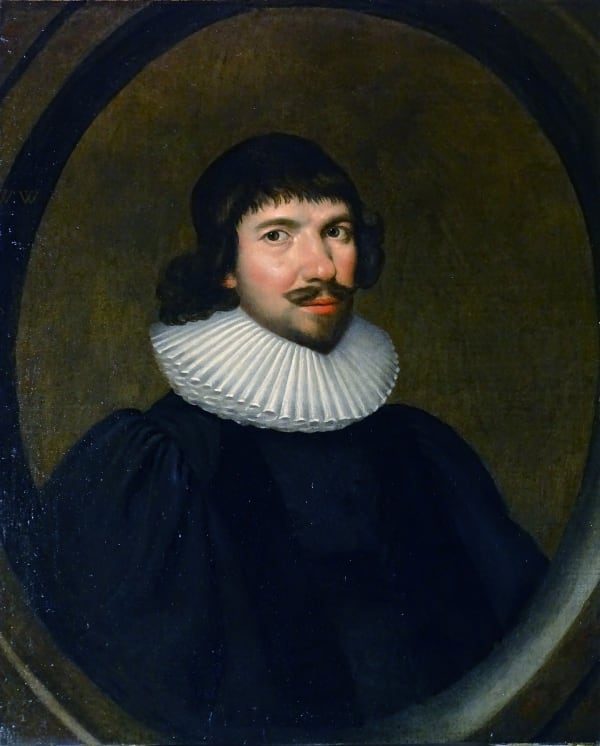Cornelius Johnson English, 1593-1661
Cornelius Johnson was baptised at the Dutch Church in Austin Friars on 14th October 1593, to a family originally from Cologne via Antwerp. They were presumably refugees from the Duke of Alva’s Terror. He married Elezabeth Beke “of Colchester”, of another Continental immigrant family, on 16th July 1622. Nothing is known of his training, though both Dutch and English apprenticeships have been mooted. His pedigree is recorded in the Herald’s Visitation of London 1633-5, when he was “of the Blackfryars”, an artistic enclave. In c.1636 he removed to Kent where he lived with the family of Arnold Braems, at Bridge on Barham Down. Numerous Kentish sitters are to found amongst his oeuvre in the 1630’s. He left England for Holland at the outbreak of the Civil War, his passport being recorded in the Parliamentary journal of 7th November 1643. He died in 1661/2 in Holland.
Johnson is the most satisfying and "English" of the portrait painters working in England in the 1620s and 30s, and is certainly the best portrait painter of the generation before Van Dyck. His technique is splendid, and it is a tribute to the soundness of it that so many of his paintings survive in good condition. His style is restrained and introspective, and he gives loving attention to the details of costume.
The large majority of his paintings are of head and shoulders size, though he occasionally painted both on the scale of life and, as here, as in miniature. His admirably accurate portraits never flatter, and are sober and objective in their portrayal of his usual patrons: the gentry and nobility below the level of the courtiers. His style is easily identified by its coolness and restraint, and he has left us a substantial corpus of signed and dated work which enables us readily to chart his style development as an artist.
Much of his work is to be found in family collections from the county of Kent, where he was living in the early 1630’s. He also seems to have spent some time in Herefordshire and the West Midlands, where there is another quite substantial corpus of his work. At the approach of the Civil War he obtained a passport to go to Holland, the country of his parents (he himself was baptised in 1593 at the Dutch Church in London). Thereafter, his work is rather rarer, and mutates into a more typically Dutch Baroque style of composition. His technique, though, remains refined throughout his career.
He died in Amsterdam in 1664.





